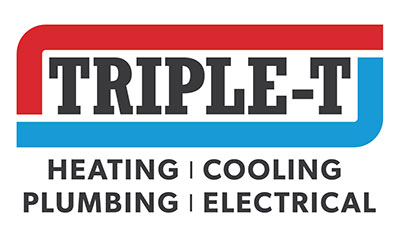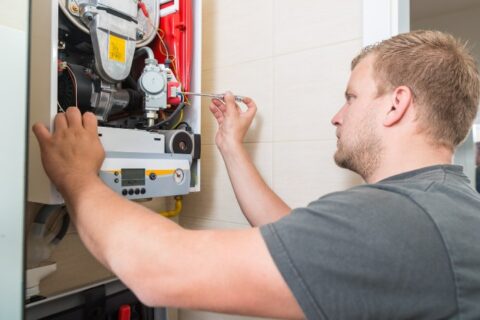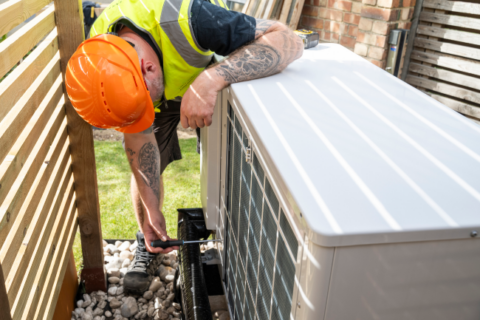What to Expect During Drain Cleaning Service
There’s nothing worse than taking a shower while standing ankle-deep in wastewater, though a kitchen sink that refuses to drain is a close second. Plumbing problems like these are enough to disrupt your entire routine. The only way to get things flowing again is to clean the drain.
People often associate “drain cleaning” with commercially available drain chemicals. However, this is not the product professionals use to clean your drains. In fact, these caustic chemicals can damage your plumbing, so experts often advise against them. Rather than pouring chemicals down the sink without a second thought, call a plumber the next time you have a badly clogged drain.
What Happens During Drain Cleaning Service?
A thorough drain cleaning appointment may last one to two hours. Here’s what to expect from your plumber during the service call.
Ask Questions and Offer Advice
The plumber begins by asking about the history of your plumbing system and how well you care for your drains. For instance, if you explain that you often bathe your dog in the bathtub, making no effort to keep the hair from going down the drain, your plumber may offer tips to change your habits and prevent future clogs.
Perform Diagnostics
The plumber may test your fixtures and inspect the pipes to help pinpoint the cause and location of the clog. The top diagnostic methods include:
- Running the tap: If you complain that the bathroom sink drains poorly, the plumber may turn the faucet on full blast to see the problem for themselves.
- Conducting a video pipe inspection: If the plumber sees evidence that the blockage is deep in the sewer line, such as multiple drain clogs at once, they may send a cable-mounted camera into the drainpipe. This diagnostic tool tells the plumber the location and severity of the clog so they can determine the level of cleaning necessary.
Select a Drain-Cleaning Method
Depending on the results of diagnostic tests, a plumber may choose one of the following tools to clean your drains:
- A manual auger, also known as a drain snake or plumbing snake, has a wound-up cable with a corkscrew-like head. The plumber feeds this cable into the drain to break up the clog. A manual auger easily bores through minor clogs located relatively close to the drain opening.
- A motorized auger is a heavy-duty version of a regular drain snake. Powered augers can travel up to 150 feet down the drain with much more power behind them than a manual auger. If the clog is too solid or located more than 10 feet from the drain opening, this is the tool plumbers reach for.
- A hydro-jetting machine shoots high-pressure water into the drainpipe to flush away all traces of built-up grease, grime, and soap scum. It’s even powerful enough to cut through intrusive tree roots. Hydro-jetting leaves your pipes as good as new.
Inspect the Drains & Test the Faucets
After cleaning your drains, the plumber runs the tap to ensure the water drains smoothly. If a video camera was used to diagnose the problem, a final inspection should reveal that the blockage has been removed.
How to Prepare for Drain Cleaning Service
Once you schedule an appointment with a drain cleaning specialist, here’s how to prepare your home for a smooth visit:
- Clear a path: Walk from your front door to the drain in question. Is anything blocking the way? You’ll need to clear a 3-foot-wide path to accommodate any high-tech drain cleaning equipment.
- Make the affected fixtures and drains accessible: Remove personal items from under the sink and the surrounding countertop to give the plumber room to work. You may also want to remove rugs and mats to avoid being splashed by dirty water. If a severe backup has occurred and several inches of sewer water is present, contact a remediation company to clean up the mess before calling a plumber.
- Lock your pet away: By confining your dog or cat during a drain cleaning visit, you prevent them from getting in the way or running out the front door as the plumber goes in and out.
- Know that drain cleaning isn’t always the solution: Debris clogging the pipe isn’t the only cause of a slow drain. If your home is prone to plumbing backups, you could have a more serious problem on your hands, such as a collapsed sewer line. If your plumber discovers a situation like this during your drain cleaning visit, they may recommend sewer repair or replacement.
What to Expect from a Qualified Drain Specialist
A plumber’s job is to provide a service, so it’s reasonable to have certain expectations regarding how the job will go. When you choose Triple T Heating, Cooling & Plumbing for professional drain cleaning in Utah County, you get nothing less than the best. Here’s what to expect from our highly trained team:
- Fast response: Our plumbers are available around the clock, offering 24-hour response times when you need us most.
- Courtesy and consideration: We treat your home as if it were our own and strive to leave the work area cleaner than we found it.
- Upfront pricing: Once we diagnose the problem, we’ll provide an accurate estimate before the work begins so there are no surprises on your final bill.
- Long-lasting results: We offer a 100% satisfaction guarantee on every drain cleaning job, so you can expect your pipes to flow freely for a long time to come.
Now that you know what to expect during drain cleaning service, the next step is to schedule an appointment with Triple T. We have nearly 50 years of experience cleaning drains, with customer satisfaction at the forefront of everything we do. Call us today at 801-798-7711 or contact us online to schedule drain cleaning or other plumbing services in Provo, Orem, or Spanish Fork.


